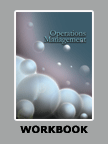Inventory Problems at Nike
|
|
ICMR HOME | Case Studies Collection
Case Details:
Case Code : OPER030
Case Length : 10 Pages
Period : 1991 - 2003
Organization : Nike
Pub Date : 2004
Teaching Note : Available
Countries : USA
Industry : Sports & Apparel
To download Inventory Problems at Nike case study
(Case Code: OPER030) click on the button below, and select the case from the list of available cases:

Price:
For delivery in electronic format: Rs. 300;
For delivery through courier (within India): Rs. 300 +Shipping & Handling Charges extra
» Operations Case Studies
» Case Studies Collection
» ICMR HOME
» View Detailed Pricing Info
» How To Order This Case
» Business Case Studies
» Case Studies by Area
» Case Studies by Industry
» Case Studies by Company 
Please note:
This case study was compiled from published sources, and is intended to be used as a basis for class discussion. It is not intended to illustrate either effective or ineffective handling of a management situation. Nor is it a primary information source.
Chat with us

Please leave your feedback

|
|




<< Previous
Nike's Profits Fall Contd...
|
One of the leading sports goods companies in the world, Nike manufactured high
quality athletic shoes for a variety of sports including baseball, athletics,
golf, tennis, volleyball and wrestling. In addition to footwear (which accounted
for almost 60 percent of the company's sales), Nike also manufactured fitness
equipment, apparel and accessory products. The company's products were sold in
over 140 countries around the world. Headquartered in Beaverton, in the state of
Oregon, Nike had production facilities scattered around the world and had a
complicated supply chain system that extended from Nike factories in developing
countries in Asia to uptown stores in the US and other parts of the developed
world.
|

|
Background Note
The future co-founders of Nike met in 1957, when Knight was an undergraduate
student and middle-distance athlete at the University of Oregon (which was
known for having the best track program in the country) and Bill Bowerman (Bowerman),
the athletics coach.
|
|
In the
early 1960s, when Knight was doing his MBA at Stanford University, he
submitted his marketing research dissertation on the US shoe
manufacturing industry. His assertion was that low cost, high quality
running shoes could be imported from labor-rich Asian countries like
Japan and sold in the US to end Germany's domination in the industry.
In 1962, while on a world tour, Knight met the management of the
Onitsuka Company (Onitsuka) of Japan, which manufactured high quality
athletic shoes under the brand name 'Tiger'. He arranged for these shoes
to be imported to the US for sale under the name 'Blue Ribbon Shoes' (BRS). |
(When the management of Onitsuka asked him about which
company he represented, he thought up this name. BRS became the forerunner of
Nike). In late 1963, Knight received his first shipment of 200 Tiger shoes. In
1964, Knight and Bowerman formed a partnership, with each of them contributing
$500, and BRS formally came into being.
The first shoes were sold from the basement of Knight's house and the backs of
trucks and cars at local track events. The athletes who wore the shoes were
asked for feedback to improve future shoe designs. By the end of 1964, BRS had
sold 1300 pairs of shoes and generated $8000 in revenues...
Excerpts >>
|
|










